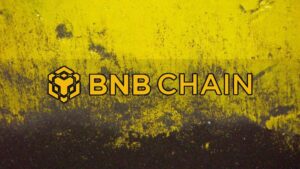Ethereum co-founder, Vitalik Buterin, has recently sparked a debate on the classification of various layer-2 scaling solutions, particularly focusing on whether L2s using Celestia are genuine rollups or validiums. On January 16, Buterin agreed with a comment posted by Daniel Wang, the founder of the Ethereum roll-up solution Taiko.
This is correct.
The core of being a rollup is the unconditional security guarantee: you can get your assets out even if everyone else colludes against you. Can't get that if DA is dependent on an external system.
But being a validium is a correct choice for many apps, and…
— vitalik.eth (@VitalikButerin) January 16, 2024
Wang suggested that if an Ethereum rollup uses another data chain for data availability, such as the modular blockchain Celestia, then it’s an Ethereum validium. Buterin responded, “This is correct. The core of being a rollup is the unconditional security guarantee: you can get your assets out even if everyone else colludes against you. You can’t get that if data availability is dependent on an external system”.
Validium is an Ethereum scaling solution that uses zero-knowledge proofs to enable off-chain transactions while relying on Ethereum’s mainnet for security and verification. In contrast to zk rollups that aggregate transactions on a secondary network and validate them on a primary network such as Ethereum, Validium networks do not transmit transaction data to a primary network. This is a key distinction in their operation.
Rather than storing full transaction data on-chain, Validium networks post a cryptographic proof of transaction validity. This approach is designed to enhance scalability. However, it requires operators to post proofs honestly and may result in lower data availability compared to rollups.
Vitalik Buterin’s Take on Networks Like Celestia

Networks such as Celestia employ a modular blockchain structure, which consists of data availability layers and validation layers. The validation layers utilize Validiums to facilitate rapid and confidential transactions. This is an important feature of their design. Buterin’s comments have stirred up discussions in the Ethereum community. Some, like Ethereum community member Ryan Berckmans, assert that validiums are layer-2 networks.
He expressed a firm belief that a layer-2 chain settles on Ethereum. They are prepared to staunchly defend this position, even against those who argue that for a chain to be considered a layer-2, its Data Availability (DA) must be on Ethereum. This discussion highlights the intricate nature and continuous development of blockchain technology. It also emphasizes the need for precise and correct terminology in this fast-paced field.
In an update posted on Warpcast, a decentralized social media platform, on January 16, Buterin presented a diagram suggesting a change in certain terminologies. The proposal was to replace terms like “security-favoring” and “scale-favoring” with more concise terms such as “strong” and “light”. This change aims to make the language more succinct and easier to understand.










